#Mountain West Region
Text
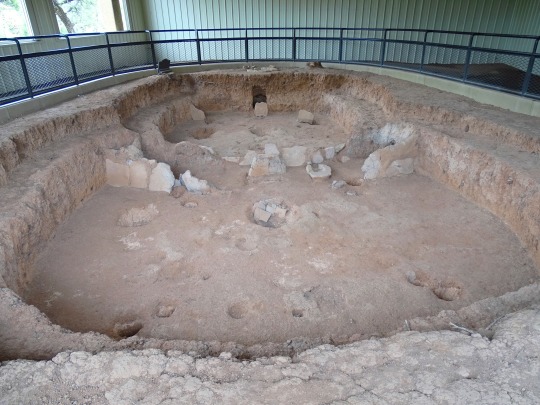
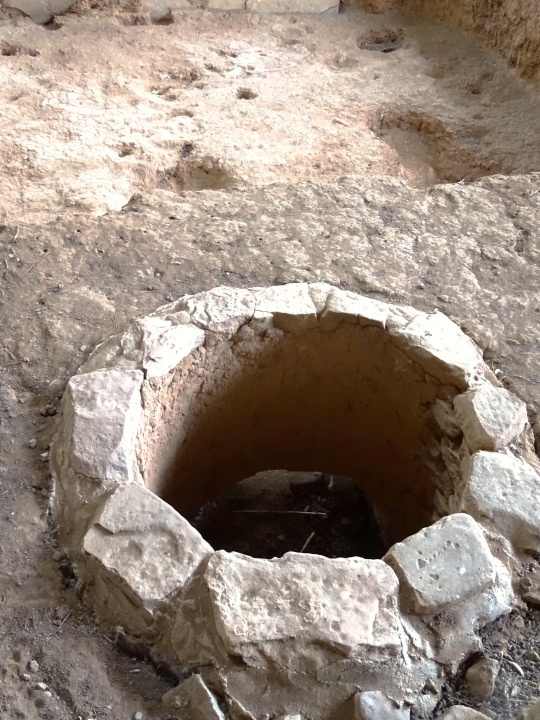


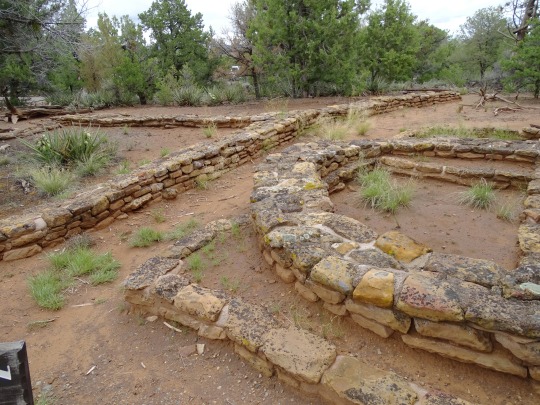

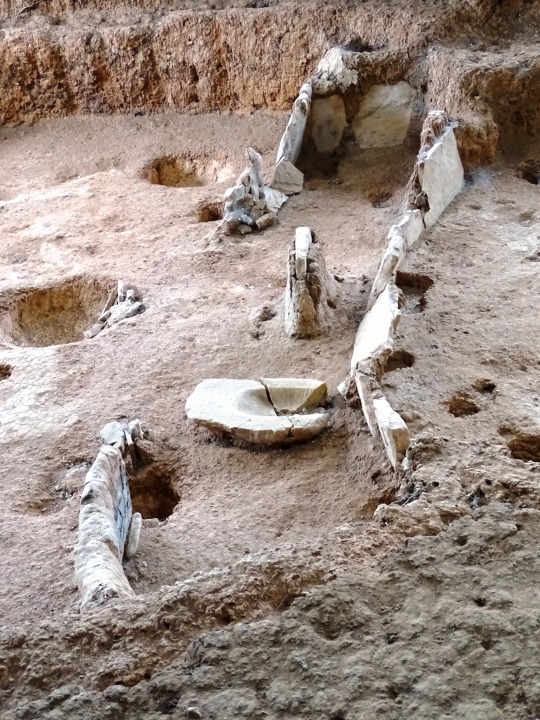


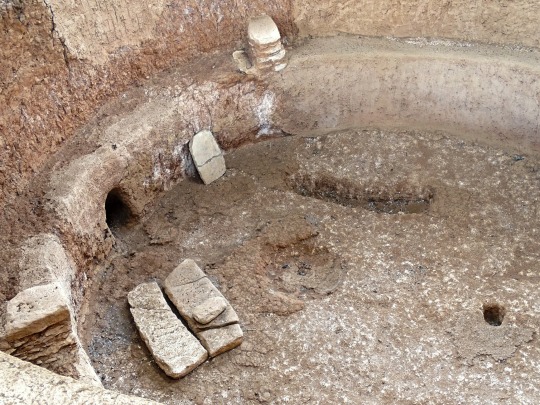

Mesa Verde National Park (No. 10)
With the introduction of corn to the Mesa Verde region c. 1000 BC and the trend away from nomadism toward permanent pithouse settlements, the Archaic Pueblonians transitioned into what archaeologists call the Basketmaker culture. Basketmaker II people are characterized by their combination of foraging and farming skills, use of the atlatl, and creation of finely woven baskets in the absence of earthen pottery. By 300, corn had become the preeminent staple of the Basketmaker II people's diet, which relied less and less on wild food sources and more on domesticated crops.
In addition to the fine basketry for which they were named, Basketmaker II people fashioned a variety of household items from plant and animal materials, including sandals, robes, pouches, mats, and blankets. They also made clay pipes and gaming pieces. Basketmaker men were relatively short and muscular, averaging less than 5.5 feet (1.7 m) tall. Their skeletal remains reveal signs of hard labor and extensive travel, including degenerative joint disease, healed fractures, and moderate anemia associated with iron deficiency. They buried their dead near or amongst their settlements, and often included luxury items as gifts, which might indicate differences in relative social status. Basketmaker II people are also known for their distinctive rock art, which can be found throughout Mesa Verde. They depicted animals and people, in both abstract and realistic forms, in single works and more elaborate panels. A common subject was the hunchbacked flute player that the Hopi call Kokopelli.
Source: Wikipedia
#Badger House Community#Wetherill Mesa#antechamber#pithouse#semi-subterranean home#Mesa Verde National Park#UNESCO World Heritage Site#Paleo-Americans#Mountain West Region#ancestral puebloan archaeological site#Montezuma County#Native American history#archaeology#ruins#tourist attraction#landmark#travel#vacation#summer 2022#Colorado#USA#original photography#flora#landscape#countryside
107 notes
·
View notes
Text

INTERVIEW!!!!!
Work from home with (Amazon)
FULL-Time/part-time
Customer Service
Date Entry
Position Available now
(start as soon as tomorrow!)
Pay:$25.00/Hr
Training: 2 weeks ($25/Hr)
Hours : Flexible
Monday-Friday :8am-3pm
Available : Strictly Data entry work from home
GREAT FOR YOUNG AND ADULT
No Experience Needed!
We Train! Bonuses! Paid weekly via Direct Deposit/ Check depend on your Choice Full Benefits: 401K, Medical, Vision, Life.
#charles leclerc#lewis hamilton#formula 1#monza 2023#lando norris#Groton#Massachusetts#united states#usa#north america#Autumn#Fall#Mesa Verde National Park#Cliff Palace#Ancestral Puebloans#Montezuma County#Native American history#Mountain West Region#archaeolog#travel#original photography#vacation#tourist attraction#landmark#architecture#usa news#made in usa#america#usagi tsukino#usagi yojimbo
0 notes
Text
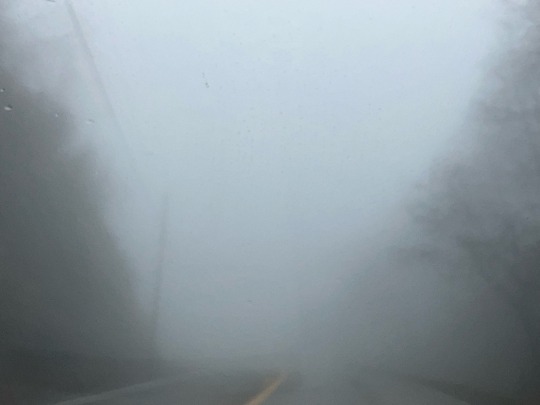
bolt mountain, wv
#southern gothic#regional gothic#rural gothic#Appalachian gothic#West Virginia#southern West Virginia#zander’s photos#bolt mountain#bolt mountain wv
67 notes
·
View notes
Text


Travel Diary: My journey to The South
out on the open road
Montana
#Montana#35mm#analogue#my journey to the south#film photography#photographers on tumblr#original photography#small town america#small town aesthetic#small town gothic#small town usa#rural america#american gothic#road trip#on the road#train tracks#mountains#regional gothic#out west
80 notes
·
View notes
Text
5sos as city councils in sydney: metropolitan southwest
luke as the inner west
ashton as canterbury-bankstown
calum as georges river
michael as bayside
@sofsversion got to be one of the weirder things i've ever thought of
#and yet. am i gonna do metro southeast? strathfield burwood cumberland canada bay? regional southwest? maybe#5sos#5 seconds of summer#luke hemmings#ashton irwin#calum hood#michael clifford#sydney geography i guess#i'm gonna turn this into a moodboard one day#and one for campbelltown camden liverpool fairfield. parramatta blacktown penrith hawkesbury. the hills hornsby ku-ring-gai northern beache#randwick waverley woolahra sutherland. sydney north sydney mosman willoughby. lane cove ryde hunters hill and i hate when they don't math#i bet there's one i've forgotten though#okay figured it out. gonna include the blue mountains and cumberland in the west lot and do pairings for that#and for the bougie parramatta river ones too
24 notes
·
View notes
Text




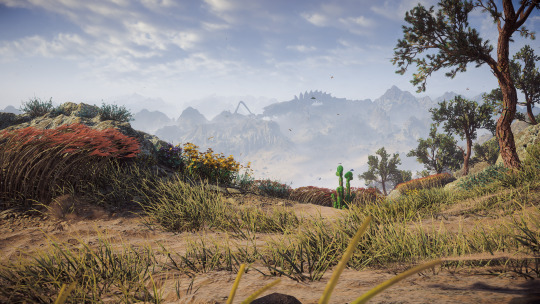

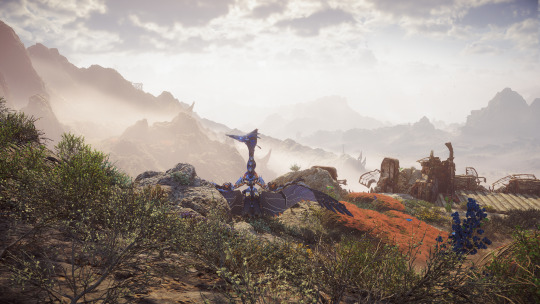
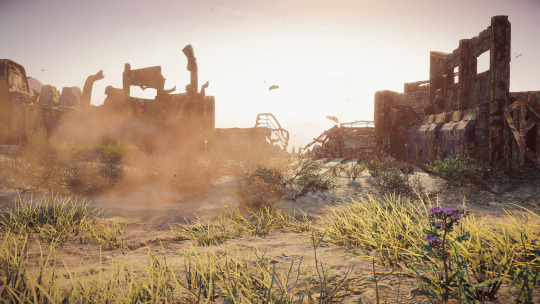
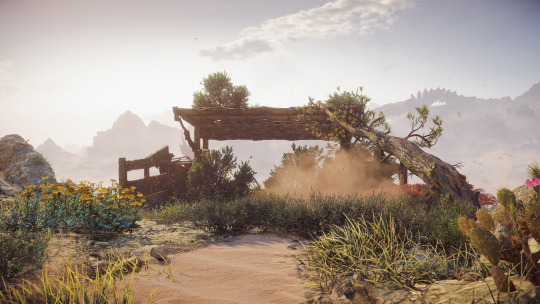
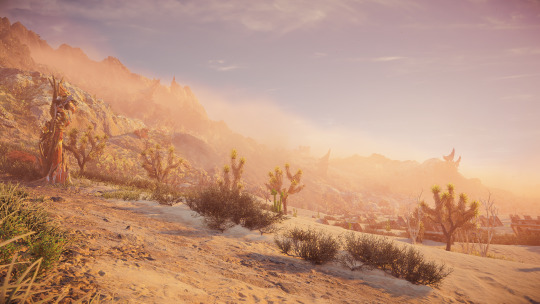

Towards the sands
#horizon forbidden west#hfw#hfw photomode#hey! guess who got logged out again while trying to upload these!#ah yes. tumblr malfunctions how i missed you#ANYWAY.#i've mentioned about a billion times before how much i love how the lighting changes between the various regions of the map#and i feel you can see it here pretty well#blue-ish up on the mountains#and predominantly gold-orange-yellow down in the desert#also who put those sunwings on top of the vista point#i feel they're ridiculously tough to fight#plus i don't really want to kill them but it's downright impossible to sneak through them and align aloy with the image#unless i'm doing something wrong#that's also always a possibility
22 notes
·
View notes
Text
the problem with building out america's rail network btw is that it's privatized and there will never be a corporate incentive strong enough or backed enough to implement effective, accessible, AND privatized countrywide travel. nationalize railways deliver on the demands of railway workers and most importantly respect indigenous sovereignty/include indigenous design input when plotting routes
#and a million other things mostly to do with geology but in terms of politics and morals this is what im going with as far as a snappy#summary of 'the problem'#however geology elaboration: america is So hard to build railways across because our most populated areas along the west coast#(where most of the rail drought is; rail PRICING on the east coast is a whole nother thing)#are stupid mountainous. the california hsr plan is spending several million more on the rail line bc they gotta plan around a mountain#and the problem gets worse the farther north you get on account of the cascades and ESPECIALLY the region around shasta#in another life i was a seismic engineer. anyway#i'm looking for a papers or other peer-reviewed content on the history of american rail labor#if anyone has favorites send them my way cause all my research is locked on california and the pacific coast more broadly#'research' my font of pdfs i downloaded from ILLs lol
35 notes
·
View notes
Text
huge fan of the glaseido mountain music so far
#i guess there’s no ‘northern province’ it’s just multiple areas#but still#i’m so hyped that i’ve finally worked my way up to the northern section of the map#i’ve been taking things in order one part of the map at a time basically#what is it with video games and making final areas ice levels#i mean this isn’t the final area for me of course cuz like i said there are other things in the northern province area#but i’m gonna be doing stuff slightly out of my usual order#i’ve got two gyms two team star bases and one titan left#gonna tackle the ice gym now then go out east to one of the team star bases then go way west to the last titan#then get the last team star base then get the last gym#so it’ll be a kinda wonky and inefficient path but it’s all according to keikaku#goldie’s pokémon violet liveblog#i love ice levels in video games so much…#and they usually have some of my favorite music too#i get the sense this was supposed to be the last area tbh#look i would’ve done that northeastern team star base a lot earlier if i could’ve#but i physically could not find a way to get to that region without going up and over and through the mountains first#it was surrounded by sheer cliffs on all sides#and i didn’t wanna take on the mountain until i was really ready to commit to going to that area
9 notes
·
View notes
Text
"When considering the great victories of America’s conservationists, we tend to think of the sights and landscapes emblematic of the West, but there’s also a rich history of acknowledging the value of the wetlands of America’s south.
These include such vibrant ecosystems as the Everglades, the Great Dismal Swamp, the floodplains of the Congaree River, and “America’s Amazon” also known as the “Land Between the Rivers”—recently preserved forever thanks to generous donors and work by the Nature Conservancy (TNC).
With what the TNC described as an “unprecedented gift,” 8,000 acres of pristine wetlands where the Alabama and Tombigbee Rivers join, known as the Mobile Delta, were purchased for the purpose of conservation for $15 million. The owners chose to sell to TNC rather than to the timber industry which planned to log in the location.
“This is one of the most important conservation victories that we’ve ever been a part of,” said Mitch Reid, state director for The Nature Conservancy in Alabama.
The area is filled with oxbow lakes, creeks, and swamps alongside the rivers, and they’re home to so many species that it ranks as one of the most biodiverse ecosystems on Earth, such that Reid often jokes that while it has rightfully earned the moniker “America’s Amazon” the Amazon should seriously consider using the moniker “South America’s Mobile.”
“This tract represents the largest remaining block of land that we can protect in the Mobile-Tensaw Delta. First and foremost, TNC is doing this work for our fellow Alabamians who rightly pride themselves on their relationship with the outdoors,” said Reid, who told Advance Local that it can connect with other protected lands to the north, in an area called the Red Hills.
“Conservation lands in the Delta positions it as an anchor in a corridor of protected lands stretching from the Gulf of Mexico to the Appalachian Mountains and has long been a priority in TNC’s ongoing efforts to establish resilient and connected landscapes across the region.”
At the moment, no management plan has been sketched out, but TNC believes it must allow the public to use it for recreation as much as possible.
The money for the purchase was provided by a government grant and a generous, anonymous donor, along with $5.2 million from the Holdfast Collective—the conservation funding body of Patagonia outfitters."
youtube
Video via Mobile Bay National Estuary Program, August 7, 2020
Article via Good News Network, February 14, 2024
#united states#alabama#estuary#wetlands#swamp#river#environment#environmental issues#conservation#video#biodiversity#american south#ecosystems#ecology#conservation news#wildlife conservation#ecosystem#conservation efforts#good news#hope#forest#swampco#re#Youtube
2K notes
·
View notes
Text
ALANYA





#Alanya is a tourism district of Antalya province in Turkey's Mediterranean Region. Its distance from the city center is 154 kilometers. It i#with the Taurus Mountains in the north and the Mediterranean Sea in the south#within the borders of the Turkish Riviera#with an area of 70 kilometers along the coastline.[33] It is surrounded by Manavgat district along the coastline from west to east#Gündoğmuş district with a mountainous terrain in the northwest#Hadim in the north#Taşkent and Sarıveliler in the east#and Gazipaşa in the southeast.[34] It is home to old cities such as Manavagat#Side and Selge. Alanya is a historical city of rare beauty#which hosted pirates in ancient times
1 note
·
View note
Video
youtube
Lecture 1: Early Hillbilly musician Al Hopkins (1889-1932) (along with his band, His Buckle Busters) performs “West Virginia Gals” from 1927. Music historians credit North Carolina-born Hopkins (1889-1932) with inventing the term “Hillbilly Music,” a type of music that combined folk (especially from the Appalachian Mountain region), bluegrass, gospel, Old-Time, Scots-Irish, and other types of traditional 19th Century American musical influences. Hopkins recorded his first songs in 1924 and quickly rose to stardom as one of the most famous early Hillbilly acts, but tragically his career was cut short by an auto accident in Virginia in 1932.
#Hillbilly Music#Country Music#Al Hopkins#Al Hopkins & His Buckle Busters#Bluegrass#Appalachian Mountain region#gospel#Old-Time Music#Scots-Irish Music#West Virginia Gals (1927)#1920s
0 notes
Text

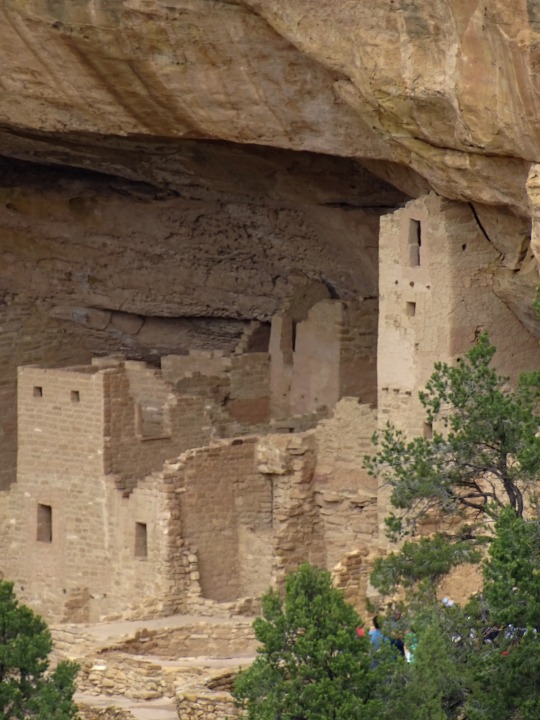

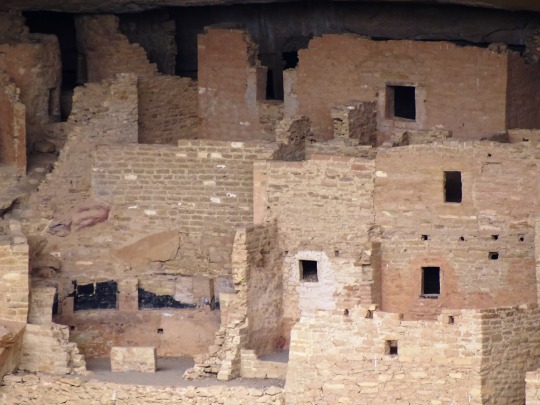
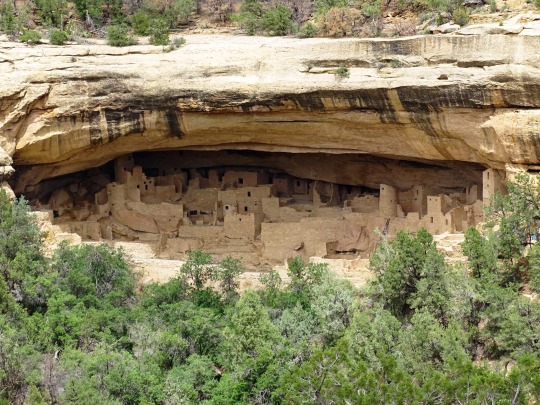





Mesa Verde National Park (No. 21)
The Cliff Palace Overlook is the first stop 6-mile (10 km) Cliff Palace Loop Road. Recent studies reveal that Cliff Palace contained 150 rooms and 23 kivas and had a population of approximately 100 people. Out of the nearly 600 cliff dwellings concentrated within the boundaries of the park, 75% contain only 1-5 rooms each, and many are single room storage units. If you visit the Cliff Palace overlook you will view an exceptionally large dwelling which may have had special significance to the original occupants. It is thought that Cliff Palace was a social, administrative site with high ceremonial usage.
Recent studies reveal that Cliff Palace contained 150 rooms and 23 kivas and had a population of approximately 100 people. Out of the nearly 600 cliff dwellings concentrated within the boundaries of the park, 75% contain only 1-5 rooms each, and many are single room storage units. If you visit Cliff Palace you will enter an exceptionally large dwelling which may have had special significance to the original occupants. It is thought that Cliff Palace was a social, administrative site with high ceremonial usage.
Source
#Mesa Verde National Park#Cliff Palace#Ancestral Puebloans#Montezuma County#Native American history#Mountain West Region#archaeolog#travel#original photography#vacation#tourist attraction#landmark#architecture#landscape#summer 2022#Colorado#USA#ruins#geology#flora#nature#desert varnish
128 notes
·
View notes
Text
So growing up I heard these kinds of statements: "X number of species goes extinct every year" and "Most species that go extinct are undescribed/undiscovered"
And I could never really picture what that looked like. What species were going extinct? Where? Why? If they're undiscovered, how do we know about it? It's only recently that I've been able to understand.
This is an example:
Since European colonization, 99% of old growth forest in the eastern United States was cut down.
In Eastern Kentucky, the coal industry led to waste and rubble being dumped in valleys, literally burying countless mountain streams in gravel and toxic sludge.
Colonialism and exploitation moved faster than leaf-sketching and bug-collecting European naturalists did. It's very simple, and very sad. When the coal mines polluted the streams, many species of fish that only lived in one specific stream must have gone extinct. When Native Americans were forced off their lands, we can presume that rare plant species found in meadows, canebrakes and oaks savannas dependent on particular anthropogenic disturbances went extinct. When old-growth tracts were logged, God only knows how many lichens, mosses, ferns and plants went extinct because the trees they lived on were chopped.
We can extrapolate from the diversity in the fragments that remain, and the number of rare endemic species in especially isolated areas, and guess what probably existed in areas that were obliterated early on.
Keep in mind: All is not lost. New species are still being discovered.
The Bluegrass region of Kentucky was once called one of the most peculiar plant communities of the South—an eastern island of oak savanna with an understory of Arundinaria bamboo and legumes. Early European settlers reported that the ground was incredibly rich and covered with knee-high clover and dense thickets of "cane" (bamboo) that made navigation next to impossible.
Some people say the Bluegrass was always a forest and the savanna theory is wrong. Bullshit! I know this because of several reasons:
The earliest records don't mention any sycamores at all in the Bluegrass, whereas river cane (bamboo) was everywhere. Arundinaria bamboos are fire dependent species, whereas sycamore is HIGHLY intolerant of fire. From this we can infer that the area had a history of frequent burning.
Everyone in the Bluegrass knows about the Old Trees. In horse and cattle pastures in the Bluegrass region, you will sometimes see gigantic, twisted old oaks, with great spreading crowns. Nowadays you hardly see an oak that properly merits the term "gnarled," but the gnarl of the Old Trees is crazy. Just look up google images for Kentucky tourism and you'll see one of those huge trees in the background of several of the photos, I bet. Hardly anyone consciously thinks about it, but these are pre-colonization trees. And they are all obviously open-grown—their growth habit over the centuries has spread out, rather than grown straight up as in a forest.
Early colonizers' records report big walnut and cherry trees in the area. Most of the old houses in the area are made of walnut wood. Those are mid-successional species—you wouldn't find them dominating in an area that was heavily disturbed regularly and recently, they're trees, but you wouldn't find them in a forest that had been minimally disturbed forest for centuries either. The fact that they got huge suggests that a regular disturbance pattern of the Bluegrass region was abruptly interrupted and mostly ceased.
It was a pretty special place, a savanna environment with a mix of giant twisted oaks, rolling prairie hills and bamboo thickets, with deep sinkholes connecting the surface to subterranean cave ecosystems. In places the limestone bedrock reached the surface, creating limestone glades—unique desert-like habitats with many rare plants including Opuntia cactus.
It was also one of the first ecosystems west of the Appalachians to be destroyed by settlers.
BUT! Just a few years ago, we discovered Trifolium kentuckiense—Kentucky clover. A unique species of clover that has only been found in two spots in Central Kentucky.
This means the Bluegrass species that probably went extinct because their habitat was ignorantly logged, plowed and grazed before they were studied by European science may not be entirely gone.
We have been able to fund exhaustive inventories of potential holdouts for big flashy animals like the ivory-billed woodpecker, but so many people view the place they live as "boring" and thoroughly explored, when there could be surviving plants hanging out just about anywhere.
But...I don't think most people realize how much of the Holocene extinction has already happened. Most of the losses are plants and bugs that you never knew existed in the first place.
I feel like lots of people are anxiously waiting for the mass extinction to "start" hitting, but that's not quite right. European colonization of the globe WAS and *is* the mass extinction (combined with climate change which is very related). It's actively ongoing in the Global South. In eastern North America, the major wave of extinctions hit between 100 and 300 years ago.
I feel so much grief for all that was almost certainly lost forever, but I also recognize that I live in a unique period of time where the future can still be changed, and in particular, the heavily damaged ecosystems of the Southeast can be restored and used to absorb carbon from the atmosphere and provide resilience to the entire globe. And I strongly suspect at least a few mysterious new plants will start popping up once that happens...because a lot of plants stick around in the soil seed bank for a long, long time, and seeds can happen to be preserved by freak accident and then sprout later.
we (researchers, scientists, people who work in this field) will desperately need to consult tribal nations for this though because from my reading into it, we don't know what the fuck we're doing. The most basic things like controlled burns are still struggling to catch on and in some places just, spraying herbicides willy-nilly on invasive plants without understanding what makes them invasive.
1K notes
·
View notes
Text
A historically and culturally significant lake in California's San Joaquin Valley that first disappeared in 1898 has returned after last year's atmospheric rivers flooded the region.
Tulare Lake, known as Pa'ashi — or "big water" — to the local Tachi Yokut Tribe, was "once the largest body of freshwater west of the Mississippi River," per Earth.com.
Vivian Underhill, who published a paper on Tulare Lake as a postdoctoral research fellow at Northeastern University, noted it was mostly sustained by snowmelt from the Sierra Nevada mountains and was 100 miles long and 30 miles wide at its peak.
The lake served as a key resource for Indigenous Peoples and wildlife and was once robust enough to allow steamships to transport agricultural goods throughout the state.
However, government officials persecuted and displaced the indigenous communities in the late 1800s to convert the area for farming through draining and irrigation.
"They really wanted to get [land] into private hands so that indigenous land claims — that were ongoing at that time — would be rendered moot by the time they went through the courts," Underhill told the Northeastern Global News. "It was a deeply settler colonial project."
While Pa'ashi periodically reappeared during the 1930s, '60s, and '80s, the barrage of atmospheric rivers California experienced in 2023 revived the lake despite the region receiving just 4 inches of rain annually. According to Underhill, Tulare Lake is now the same size as Lake Tahoe, which is 22 miles long and 12 miles wide.
Its resurgence has led to the return of humid breezes at least 10 degrees cooler than average and native species, including fish, amphibians, and birds. Lake Tulare was once a stopping point for migratory birds traveling a route known as the Pacific Flyway.
"Something that continues to amaze me is — [the birds] know how to find the lake again," Underhill told the Northeastern Global News. "It's like they're always looking for it."
The Tachi Yokuts have also returned to Pa'ashi's shores, once again practicing their ceremonies and planting tule reeds and native sage.
#submission#!!!#good news#lakes#Tulare Lake#Pa'ashi#big water#water#water is life#revitalization#anti colonialism#decolonization#nature#Tachi Yokut#indigenous peoples
412 notes
·
View notes
Text
KNIGHT ETHNIC GROUPS, ORDERS AND CULTURES: A GUIDE
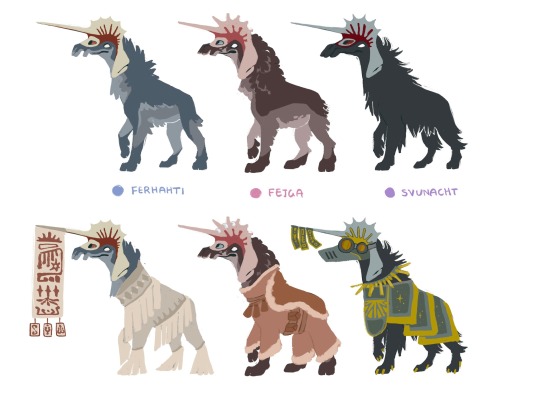
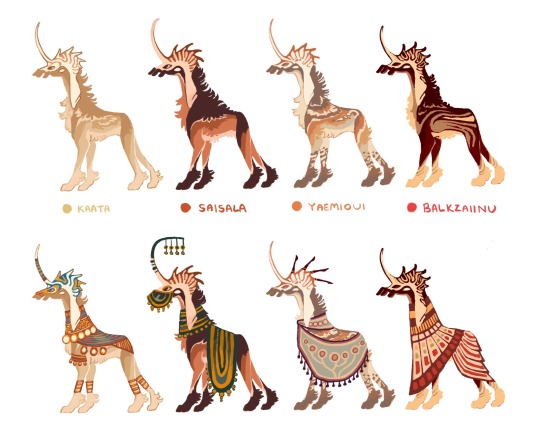
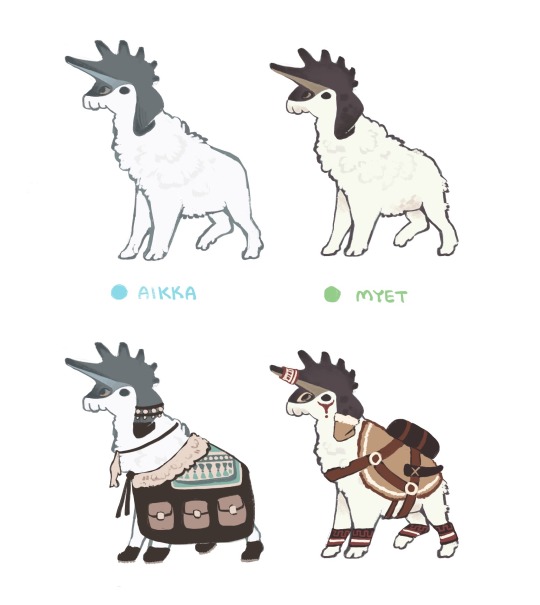
MAP OF ETTERA (Knight Homeplanet)

Standard map [continents shown]

Regional map [territories shown]
✦ ✦ ✦ ✦ ✦ ✦
I have here a weeks worth of writing and art because I for some reason enjoy torturing myself! I've been slaving away at this for so long but it's finally done and polished. So! As promised, I'm gonna talk a bit about the different Knight cultures/ethnicities, territories and general social structure.
Knights are one of my alien sophont civilisations from my Vivere 44 headworld. Here are more links from my previous posts:
Introductory post
Knight deities
Knight languages and names
With that being said, worldbuilding textwalls below the cut!
____
First, an explanation of the maps.
CONTINENTS
There are three main continents on Ettera. The two polar landmasses are Thannoeh in the northern end and Nahrui in the southern end. Thannoeh is divided by east and west, and is home to the two major Polar Knight nations. Nahrui is not occupied by any, aside from explorers or scientists. For many Knights, it is a strange, enigmatic land and a topic of great curiosity. In the middle is Val-srat; the central continent inhabited by Mountain and Plains Knights. The landmass is named as such because it is often represented in folklore as a Knight, with Valazear (the ‘Host’) being the southern Plains territories and Srati (the ‘Helmet’) being the northern Mountain territories. The Ihmna Stretch is the section of land connecting the two countries - ‘Ihmna’ is the Ferhahti word for the Integrator organ which joins the host and helmet’s consciousness.
Plant life on Ettera takes on hues of red and orange.
____
Before I get into the different ethnicities, I should elaborate more on how Knight Orders are structured and the different titles; some of the clothing articles are specific to status.
SOCIAL STRUCTURE
Most Knights live in groups called ‘Orders’, which I talked more about in this ask.
The standard roles for an Order are as follows:
Commander - Makes decisions, protects and supports the group. Commanders lead the Order across difficult terrain, plan out hunts, and take care of their members. A Commander might be chosen based on generational succession, experience, or strength. Depending on the rules of the Order, a Commander might be challenged by a Knight who desires their position, although only an elite or lieutenant would be permitted to do this. In more traditional and conservative orders Commanders are always Pike-forts.
Lieutenant - Second in command. The Lieutenant is the Commander’s primary advisor and runs the Order when they are unable to. A Commander may train their lieutenant to one day take their place as leader, or a lieutenant might serve multiple generations of Commanders without ever challenging them.
Elites - A selection of Knight soldiers who are exceptionally experienced, strong and fast. Highly respected by the rest of the Order and carry out important duties such as organisation. They have the highest chance of being the next lieutenant or Commander.
Soldiers - The main body of the Order, fully grown Knights who are proficient in all the skills necessary for survival. Soldiers are tasked with a variety of jobs to keep the Order healthy and running: they are also farmers, medics, entertainers, strategists, builders, etc.
Scouts - Scouts are Knights who make reconnaissance trips for the Order. Their job is to gather information about a potential area to settle or travel through. Scouts also have a range of other responsibilities, such as acting as lookouts, messengers, and taking care of Pages.
There are two types of Scouts - temporary and permanent. Temporary scouts are Squires (16-17 years) who have completed their training and are performing Expeditions, which they are required to do before becoming a full soldier. On Expeditions two or three Scouts will travel a certain distance away from the Order, sometimes miles away, to deliver goods to other Orders or to simply evaluate an area/route. Permanent scouts are lower-ranked Knights who are unable to become Soldiers, prefer a caretaker role, or have been relegated to the position.
Squires - Knights in training. Squires learn from a Soldier assigned to teach them. They may be tutored one-on-one, or taught in a group. They learn the ways of the Order and the world around them. Squires will often be assigned small hunting trips with their tutor, or cleaning jobs. Typically aged 7-15 years.
Pages - The youth of the Order, Knights aged 0-6 years. The pages are fiercely protected by every member of the Order. A newborn Helmet or Host will stay with their birth parent/s until they have assimilated, in which care duty is passed on to a permanent Scout. The Scout raises the Pages alongside several others until they are ready to become Squires.
This structure originated from Mountain Orders and spread to Plains and Polar regions a long time ago. Of course, not every Order follows this plan exactly, and there are countless variations. Some Knights don't live in Orders at all, and may live in pairs (which is common for travelling merchants and explorers) or small groups. Very rarely, a Knight may travel alone. This is the case for exiles.
____
You may already be familiar with the Mountain, Plains and Polar Knight regional varieties, but within these subspecies are various ethnic groups.
THE ETHNICITIES
✦ MOUNTAIN ✦
✦ Ferhahti [Ferhaht]
The Ferhahti Knights are an ethnic group located in the Ferhaht territory of Srati. Their thick fur is of various shades of grey and grey-blue. Their clothing styles are typically beige and tan, often complete with rectangular tassels and red accents. The Ferhahti have a ‘New Years’ festival called Khulaam in which they call upon Etteran spirits to bless them with good harvests, hunting and rain. During these festivals there is music, food, dancing and socialising with others. Allied Orders, usually 2-5, will come together to celebrate. Celebrations last five days. Alliances may be temporary or long-lasting, but the Orders will go on a hunt on the final day to bring down a large quarry. Oftentimes there will be a ‘Herald’ dancer who bears a flag on their horn, depicting glyphs of good fortune.
Since the Ferhahti and Kaata territories are neighbouring, and have no physical borders, Orders from both lands will often meet to trade goods and information. Many Plains-Mountain hybrids are of Ferhahti and Kaata descent due to the close proximity of the nations.
NOTE: Plains and Mountain Knights are capable of producing hybrid offspring, although they will be infertile. Neither Plains nor Mountain Knights can produce viable hybrids with Polar Knights.
✦ Fejga [Fejg]
Fejga Knights (pronounced Fej-ya) make their home in the Fejg archipelago. They are generally of a bulkier physique than other Mountain Knights, have a coat of thick fur and are well adjusted to chillier climates. They also sport a ‘saddle’ marking on their backs and are likely to have mottled/freckled patterns and blue eyes. Their Orders are partially seafaring, with many sailing from island to island in magnificent ships. Fishing is a large part of their lifestyles as the sea provides a stable source of food.
Their clothes are frequently made from leather and wool from domesticated animals. It is deceptively thin, as their pelts already provide natural insulation from the cold. Fejga Commanders wear three silver piercings on their Helmets.
✦ Svunacht [Svun]
Svunacht Knights live within the mountain-bordered territory of Svun and the island of Naahek. Orders have a special ceremony for choosing their Commander. The next in line, usually a chosen Host and Helmet born of the previous Commander and their partner, must journey across the Asall mountain range which borders Svun. It is a treacherous, long passage, and requires the Knight to wear a mask to block out the searing winds. They must also wear a spiked collar as a traditional accessory and safety measure to deter larger predators which roam the mountains. They are forbidden from carrying firearms, only armed with a knife, their wits, and natural defences. Ceremonial garments are required, passed down through generations, and three slips of fabric are worn on their horn for good luck: representing strength, wisdom and tenacity. The journey, called the Meha, is the final step in a long series of rigorous training for future successors.
The painting of Helmets is also a large part of Svunacht culture. It is typically only reserved for Commanders, Lieutenants or Elites.
★ PLAINS ★
★ Kaata [Kaat]
Kaata Knight Orders inhabit the deserts of Kaat. They are perfectly suited to desert life, their tan coats reducing heat absorbed from the sun. Kaata Knights make their clothing from woven fibres of plants that are garnished with gold pigments derived from a natural mineral found in the sands. They are especially known for their proficiency in fine crafts, and often trade jewellery to Ferhahti Orders across the Ihmna Stretch connecting Kaat and Ferhaht. Kaata clothing tends to be highly detailed and ornamental, with shiny beads adorning arm cuffs, necklaces, mandible rings and horn sleeves. The many gemstone and fossil deposits in Kaat are also incorporated into their styles. Like the Svunacht Knights, Kaata also paint their Helmets, although the practice is not restricted to any particular titles.
★ Saisala [Saisal]
Saisala Knights live in and around the deltas and rivers of Saisal, the southernmost territory of Val-srat. The area is filled with marshlands and everglades, and the weather is more wet and humid than the dry plains of Kaat. Saisala forts sport a dark reddish mane that grows right down their backs and bears some resemblance to maned wolves. Their pikes have hooked horns and sloping spines, as well as more ‘splotchy’ red stripes. Their Helmet eyes also have a pale ring around their pupils.
Saisala clothing styles are characterised by draping, ovular shapes and translucent sections of fabric. The green and gold drapes in the drawing are traditional wedding garments, complete with rounded tassels and a horn extension for pikes. The hanging ‘coins’ have engravings which tell a short but sweet poem.
★ Yaemioui [Yaemiou]
Yaemioui Orders live in a similar environment to Saisala Knights, in the wetland territories of Yaemiou. Their coats are pale like Kaata, but come in a greater combination of hues such as orange, grey and vermilion. Fun fact: all Plains Host pups are born with faint spots to help them camouflage, like lion cubs. Most lose these markings as they grow older, but Yaemioui hosts retain them even in adulthood. Their patterns are similar to painted dogs. The Yaemioui have a rich storytelling culture and have records dating back thousands of years.
Their clothing styles utilise dusky, non-bright colours that are usually two-piece. The outfit in the picture is worn by an elder Pike-fort who has carried and sired many offspring. The spine extensions are an indicator of age and experience, and a mark of high respect. The scarf around their neck depicts circles symbolising their Helmet children, and the circles on the larger cloth represent their Host progeny.
★ Balkzaiinu [Balkzaii]
On the island of Balkzaii reside the Balkzaiinu Knights, who have dark stripes on both their Hosts and Helmets and short curly fur. Unlike other Orders, Balkzaiinu communities rarely ever hunt - they were one of the first countries to develop farming and agriculture, and import a lot of domesticated animals to Saisal and Yaemiou. They are also the only country that has no Commanders in their Orders, and decisions are made by a council of higher-ups. They live in a tropical climate which receives lots of rainfall and cyclones. They are also masters in boat making and sailing, and contacted the mainland several centuries ago. Balkzaiinu have different decency standards than other Plains Knights, and in their culture it is considered proper to cover the neck area. Their clothing is generally layered and contains colourful, square designs.
✧ POLAR ✧
✧ Aikka [Ehtte Thannoeh]
Aikka Knights have domain over the Eastern section of Thannoeh. The polar word for East is Ehtte, and West Uesse. Since the country is so close to the Fegj archipelago, the two have been in contact for a long time.
Aikka have pristine white fur and a slightly bluish tinge to their Helmets. As with all Polar Knights, they are much smaller than their Plains or Mountain relatives, but are incredibly tough and hardy as a result of surviving in one of the harshest biomes. Ehtte Thannoeh is associated with scientific prowess, discovery and knowledge, and many famous Knight explorers are from Thannoeh. There are several research stations on Nahrui that are run and managed by Aikka; they have no difficulty working in the icy environment. Aikka Knights are also experts in carving, sculpting figurines and charms from the ivory tusks of marine animals. The outfit depicted in the drawing shows an Aikka Scout wearing a pendant with a carved basilosaurus-like animal for spiritual protection. These pendants are often given by parents to children. Their coat has six pockets for navigational instruments, goggles, knives, a spyglass, medical equipment and more.
✧ Myet [Uesse Thannoeh]
Myet Orders have less contact with other regions than Aikka. Residing in Uesse Thannoeh, Many of them live further inland. Myet Hosts have a more yellowish tinge to their fur and their Pike Helmets have a tan stripe. The Helmets also have a more rounded 'snout'. They have managed to domesticate a large predator which defends their camps and is used as a mount/companion. Like the Balkzaiinu, Myet Orders have a different structure than most, having two Commanders, usually a mated pair, and no lieutenants or elites.
Myet clothing is more minimal than Aikka styles. They usually cover the back with a ‘saddle’ and manipulators with gloves. The outfit drawn is of a Commander, distinguished by the ring of fabric around their horn and eye makeup. In their backpack they carry hunting weapons, and wear a knife sheathed at their side.
_________________
And that's a wrap! Thank you for reading, this project is truly a delight to work on. I leave you with some messy concept art I did a while ago for Mountain Knight clothing styles.

#read my lore boy#i got some asks about people wanting to make knight ocs which inspired me to finish this haha#vivere 44#speculative biology#spec bio#spec evo#speculative evolution#worldbuilding#writing#my art#art#illustration#artists on tumblr#knights#xenobiology#is this enough tags
841 notes
·
View notes
Text
“The settlers come wearing soldiers’ clothes, which is a new strategy.”
Since the war started, there have been more and more daily attacks by settlers against the people living in Masafer Yatta [a region of rural hamlets in the south of the occupied West Bank]. We are just farmers, many of us living in caves and tents. I am 18 years old, and I have lived here all my life. We have no way to defend ourselves from the settlers, who are fully armed thanks to [National Security Minister Itamar] Ben-Gvir. They feel that now is their chance. The war is happening, and they have the green light to kill any Palestinian they see. They feel that no one is going to care about these people in Masafer Yatta.
They come with the army’s protection from the settlement of Havat Ma’on, just five minutes from my village of Tuwani. They attack people’s sheep and demolish their tents and raid their homes. They attacked my family in our house: They came in and shot at my dad. Luckily he survived, but they broke his hand by hitting him with the butt of a gun. On Friday, they shot my cousin, who is still in the hospital. The settlers come wearing soldiers’ clothes, which is a new strategy; my dad only recognized them as settlers because they were the same people who attacked him last year.
The settlers and the army are now controlling all the land around Tuwani. They planted an Israeli flag in the high mountains nearby, and they have blocked all the routes in and out of the area. They don’t even allow us to access our donkeys, or to give them food or water. They’re saying this is state land and it’s a war. It’s dangerous to leave the town. Some people are trying to travel through the mountains, because they need to reach hospitals, or to reach markets to get food and water. But the way through the mountains is bumpy, and they get shot at. No one can sleep at night; we are afraid that the settlers will come and burn down our homes. [x]
— Luna (pseudonym), as told to Amos; Tuwani; October 17th
834 notes
·
View notes